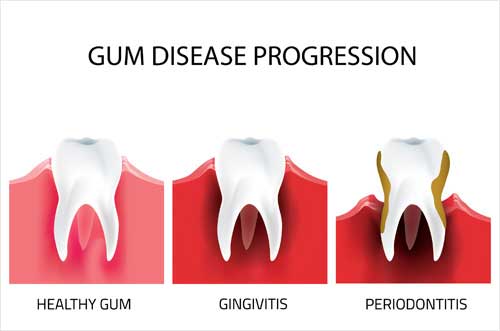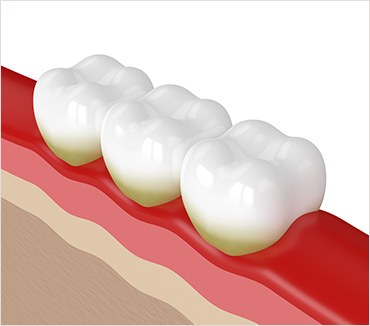Periodontal Disease Progression

There are several stages of gum disease, Gingivitis, which is the early stage of gum disease, to slight, moderate, and advanced periodontitis. Gingivitis or early gum disease is treatable and, in many cases, reversible with the non-invasive hygiene visit. This procedure is called gingivitis therapy. Periodontal therapy is a “deep cleaning” that targets the area above and below your gum line, where flossing and brushing cannot reach. Our qualified dental hygienists and dentists will remove the plaque, calculus( tartar), and bacteria hiding below the gum line and on the surface of the teeth. By eliminating the bacteria, swelling will decrease. Most, if not all, bleeding will stop, and the gum tissue will reattach to the teeth, preventing further bone and tooth loss.
In advanced periodontitis, treatment may require gum surgery along with regenerative procedures to help restore lost gum tissue or bone grafting to help regenerate and stabilize the bone. Regular dental check-ups and cleaning can help catch the disease early and safeguard against the progression of gum disease to an advanced stage.
Periodontal treatment methods depend upon the type and severity of the disease. Your dentist and dental hygienist at Great Lake Family Dental will evaluate for periodontal disease and recommend the appropriate gum disease treatment.
For more information about the progression of periodontal disease, click .




